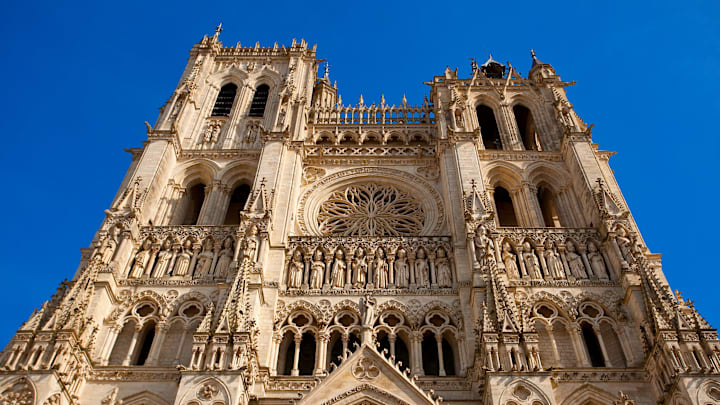The fire that engulfed parts of Notre-Dame Cathedral in Paris in April 2019 has led to years of restoration work. It’s also provided some surprising discoveries. In 2022, archaeologists found two lead coffins under its nave. The identity of one occupant was confirmed. Now, researchers believe they know the identity of the other—who, until now, was simply known as “the horseman.”
According to Smithsonian, the skeletons were suspected to be of high societal status in France owing to the lead caskets, which were normally reserved for the well-off and intended to slow decomposition. The French National Institute for Preventive Archaeological Research endeavored to put names to the skeletons. The identity of one was easy enough to figure: A coffin inscription indicated the deceased was Antoine de la Porte, a cleric who died in 1710.
The other skeleton offered comparatively little in the way of clues. Owing to his unique skeletal structure (his pelvis is deformed) he was thought to be a horse enthusiast who rode often, prompting researchers to give him the nickname “the horseman.” The remains also had signs of bone tuberculosis and meningitis. They concluded that a chronically ill equestrian from France’s past might be the coffin’s occupant.
Researchers eventually settled on Joachim du Bellay, a poet born circa 1522 who helped found a collective of French poets known as La Pléiade. Du Bellay was fond of horses: He once rode from Paris to Rome. He also mentioned symptoms of both the ailments in some of his poems. The bones have autopsy entry points consistent with what was known about du Bellay’s post-mortem exam. Crucially, he was also on the upper rungs of society: His uncle was French cardinal Jean du Bellay.

The identification is not conclusive. Du Bellay was raised in Anjou, yet the teeth of the skeleton display isotopic evidence more consistent with someone living in Paris. (Isotopes in tooth enamel can be indicative of a person’s environment.) Records also show du Bellay, who died in 1560, was buried in a side chapel elsewhere on the property. It’s possible he was moved after the last of his works were published in 1569—or, what was meant to be a temporary resting place became permanent.
Built between the 12th and 14th centuries, Notre-Dame has long been held as a marvel of architecture and French history. The 2019 fire destroyed its wooden roof beams and brought down its famous iron spire. Archaeologists have been excavating the site since the fire, uncovering original foundation work and artistic rood screens used as space dividers in the chapel. Roughly 100 graves were also unearthed in the basement, with 80 excavated. Some of the findings will be on public display ahead of the cathedral’s reopening in December.
